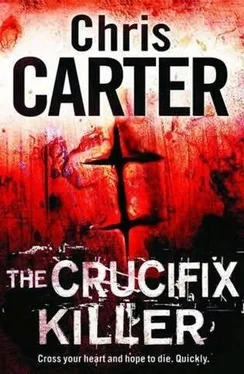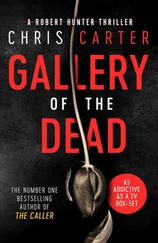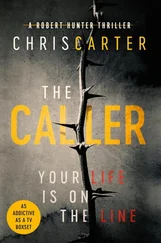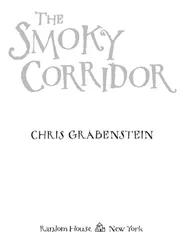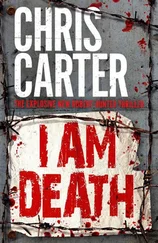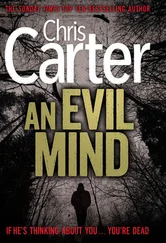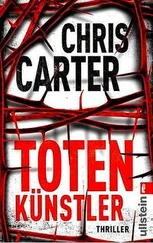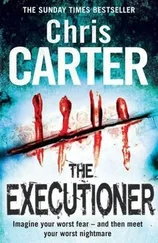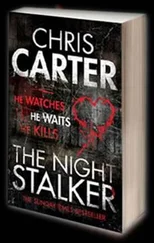‘How so?’
‘To start with, the overwhelming majority of serial killers are male,’ Hunter explained. ‘Female serial killers have a tendency to kill for monetary profit. While that can also be true their male counterparts, it’s very unlikely. Sexual reasons top the list for male serial killers. Case studies have also shown that female killers generally kill people close to them, such as husbands, family members, or people dependent on them. Males kill strangers more often. Female serial killers also tend to kill more quietly, with poison or other less violent methods, like suffocation. Male serial killers, on the other hand, show a greater tendency to include torture or mutilation as part of the process of killing. When women are implicated in sadistic homicides, they’ve usually acted in partnership with a man.’
‘Our killer works alone,’ Garcia concluded.
‘Nothing indicates otherwise.’
Both detectives fell silent for a while. Garcia turned around and faced the photographs once again. ‘So what do we have on all the old victims, what sort of connection?’ he asked, eager to get started.
‘None that we’ve found.’
‘What? I don’t believe that,’ Garcia said, shaking his head. ‘You’re not trying to tell me that you guys spent two years investigating this case and you haven’t come up with a connection between the victims?’
‘Well, believe it.’ Hunter got up and joined Garcia in front of the corkboard. ‘Look at them and tell me this – what would you say the age bracket of the victims was?’
Garcia’s eyes moved from picture to picture, pausing on each one for only a couple of seconds. ‘I’m not sure, early twenties to mid-sixties I guess.’
‘Kind of broad, don’t you think?’
‘Perhaps.’
‘And what would you say is the main type of victim, old, young, male, female, black, white, blond, brunette or what?’
Garcia’s eyes were still studying the pictures. ‘All of those judging by these.’
‘Again, kind of broad, isn’t it?’
Garcia shrugged.
‘Now, there’s something else you can’t get from these pictures, and that’s their social class. These people came from all different walks of life – poor, rich, middle class, religious and non-religious, employed and unemployed…’
‘Yes, what’s your point, Robert?’
‘My point is that the killer doesn’t go for a specific type of victim. With every new victim, we spent days, weeks, months trying to establish some sort of link between any of them. Work place, social clubs, nightclubs, bars, universities, lower and high school, place of birth, acquaintances, hobbies, family trees, you name it, we’ve tried it and we came up with a big fat zero. We’d find something that would link two of the victims together but not the others, nothing would stick. If we managed to start a chain with two victims, the link would be broken on the third and fourth one sending us back to square one. From what we know these people could’ve been chosen completely at random. The killer might as well have flipped through a phone book. In fact, if the killer hadn’t carved his symbol on the back of their necks these could’ve been seven different victims from seven different killers – eight with our new one. Nothing is the same, except the level of pain and torture he puts them through. This killer is a new breed of serial killer. He’s unique.’
‘What sort of links are you talking about when you say you managed to establish a link between two victims but not the rest?’
‘Two of the victims lived in South Central LA just a few blocks from each other, but the others were scattered all over town. Two other victims, number four and number six,’ Hunter pointed to the photographs on the board, ‘went to the same high school, but not at the same time. The links seemed more coincidental than a breakthrough. Nothing concrete.’
‘Did he follow a certain time interval between kills?’
‘Random again,’ Hunter said. ‘They go from a few days between the third and fourth victims to months, and on this last case, over a year.’
‘How about body locations?’ Garcia asked.
‘There’s a map over there; I’ll show you.’ Hunter unfolded a large map of Los Angeles with seven red dots the size of a dime scattered around it, a number next to each one.
‘These are the locations and sequence in which each body was found.’
Garcia took his time going over the marks. The first body had been found in Santa Clarita, the second one in downtown Los Angeles with the other five spread all over the map. Garcia admitted that at first glance they looked pretty random.
‘Again, we’ve tried everything, different sequences and patterns. We even brought in a mathematician and a cartographer. The problem is that when you look at random points on a piece of paper for long enough, it’s like looking at clouds in the sky, sooner or later you start seeing shapes and images, nothing real, nothing that could lead us anywhere, just your mind playing tricks on you. The only solid conclusion is that the bodies were found in and around Los Angeles. This is his burial ground.’ Hunter sat behind his desk while Garcia continued studying the map.
‘He’s gotta have a pattern, they all do.’
Hunter leaned back on his chair. ‘You’re right, they usually do, but as I’ve said, this guy is different. He’s never killed two victims in the same manner, he tries new things, different things – it’s like he’s experimenting.’ Hunter paused for a few seconds to rub his eyes. ‘Killing another human being isn’t an easy task, no matter how experienced someone is, ninety-five percent of the time the killer is more nervous than the victim. Some killers like to stick with the same MO simply because it’s worked before and they feel comfortable with it. Some move in a progression and the MO may change from crime to crime. Sometimes the offender may find that his particular course of action wasn’t very effective, wasn’t what he was looking for. Maybe too noisy, too messy, too hard to control or whatever. The killer then learns to adapt and tries new methods to see if they work better for him. Eventually he’ll find an MO that he’s comfortable with.’
‘And he’ll stick with it?’ Garcia commented.
‘Most of the time yes, but not necessarily,’ Hunter said, shaking his head.
Garcia looked puzzled.
‘Serial killers are usually after satisfaction… a sick kind of satisfaction, but satisfaction nonetheless. It could be sexual fulfillment, a sense of power, a God feeling, but that’s only half of the satisfaction.’
‘The kill itself?’ Garcia’s voice took on a grave tone.
‘Correct. It’s like taking drugs. When you first start, you only need a little hit to achieve the high you want, but soon, if you carry on, that little hit won’t be enough and you’ll go for more, you start chasing the high. In the case of a killer, the murders become more violent, the victims have to suffer more so the killer can get the satisfaction he needs, but again, just like drugs, there’s usually a steady progression.’
Garcia shifted his stare back to the photographs. ‘What’s the progression here? They all look just as violent, just as monstrous.’
Hunter’s agreement came with a nod.
‘It’s like he jumped straight into the deep end. Which leads us to believe that his progression of violence came earlier on in his life,’ Garcia concluded.
‘Correct again. You catch on quick, but you can read all that on the case files.’ Hunter tilted his head towards the two large piles of paper on his desk.
‘None of these were fast kills either.’ Garcia’s attention was back on the corkboard.
‘That’s right. This guy likes to take his time with his victims. He likes to watch them suffer, he wants to savor their pain. He’s getting his satisfaction. This killer doesn’t rush, he doesn’t panic and that’s his greatest advantage over us.’
Читать дальше
